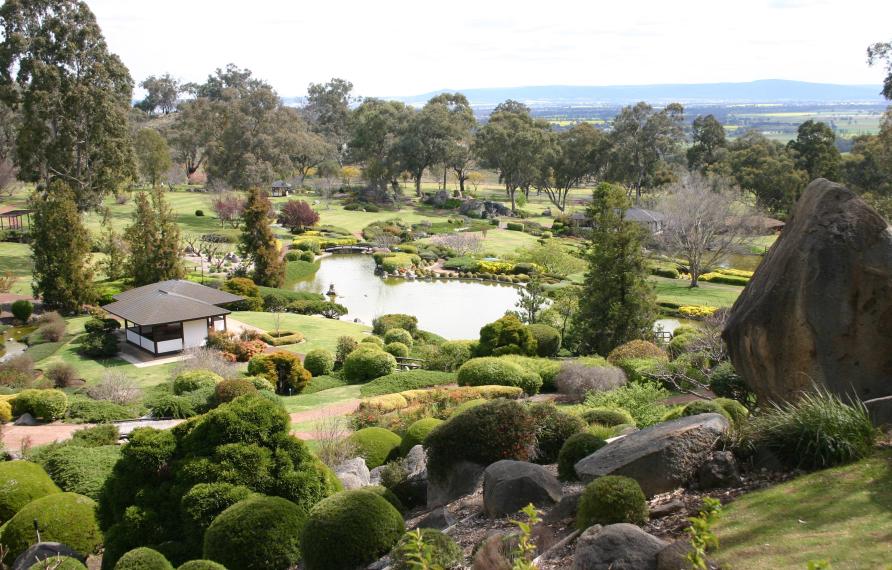Colonial heritage plays an important role in post-colonial societies. Our members have contributed their accounts of iconic architectural & urban sites across Asia:
The Cowra Japanese Garden. Designed by Japanese landscape designer Ken Nakajima. (Image © Anoma Pieris)
1. THE COWRA JAPANESE GARDEN, COWRA, NEW SOUTH WALES, 1978-1979 & 1984-1986
“The Cowra Japanese Garden is a key site for heritage diplomacy in Australia; a simulation of the Japanese homeland in the town of Cowra.
“Mr Nakajima conceived of it as a place of release for Japanese Prisoners of War fatally wounded during the Cowra Break Out of 1944, and interred in the Cowra Japanese War Cemetery alongside other deceased wartime Japanese internees.
“The kaiyū shiki – strolling garden was initiated by community members led by Don Kibler, a builder trained in architectural drawing and with the support of both the Japanese and Australian government as well as other organisations. The site, with its connection to the Cowra Japanese War Cemetery and the former Cowra Prisoner of War Camp No.12, conveys important messages of pacifism by uncovering less palatable histories of Australia’s wartime responsibilities.”
- Associate Professor Anoma Pieris, architectural historian & expert in South & Southeast Asian architecture at the Melbourne School of Design, University of Melbourne.

